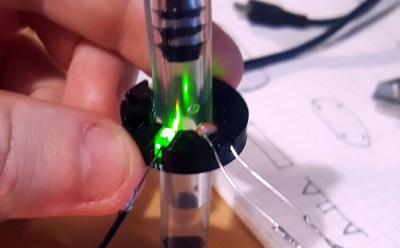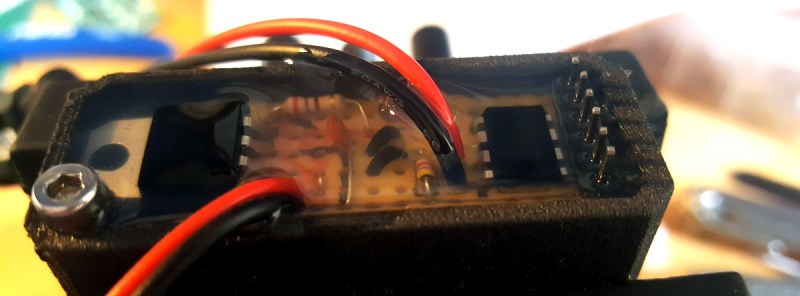At some time or another, we’ve all had an idea we thought was so clever that we jumped on the Internet to see if somebody else had already come up with it. Most of the time, they have. But on the off chance that you can’t find any signs of it online, you’re left with basically two possible conclusions. Either you’re about to enter uncharted territory, or your idea is so bad that everyone has collectively dismissed it already.
Which is precisely where [James Stanley] recently found himself. He had an idea for an non-contact optical sensor which would detect when his racing mower was about to run out of gas by analyzing light passed through a clear section of fuel hose. He couldn’t find any previous DIY examples of such a device, nor did there appear to be a commercial version. But did that mean it wouldn’t work, or that nobody had ever tried before?

Before he fully committed to designing the sensor, [James] started out by doing some proof of concept experiments. The first step was 3D printing a ring that had openings to slot in a LED and photoresistor at different angles to each other. Putting the LED and sensor on opposite sides of the fuel line makes the most logical sense, but he wanted to test if it really returned the strongest signal. Surprisingly this little test indicated that the best alignment was actually 60°, as it produced the largest gap between the “fuel” and “no fuel” readings.
Confident that the idea had merit, [James] pushed ahead and designed the 3D printed enclosure for what he’d ultimately dub the FuelSafe. He also came up with a relatively simple circuit using the ATtiny85 that he put together on a piece of perfboard. The MCU reads the value from the photoresistor, compares it to predetermined threshold values, and produces a digital signal to indicate whether or not there’s any fuel visible in the line. This signal is ultimately used to light a LED on the dashboard to indicate when it’s time to pull over and refuel.
To make sure his newly crafted sensor would survive, he even went as far as potting the whole thing with a two-part silicone resin. Unfortunately, while it might look impressive, [James] notes it was the wrong material to use as its far too soft and doesn’t really stick very well. Still, with the sensor housing all buttoned up, it should at least provide some cushioning to help with the sort of wild vibrations that we assume must go hand in hand with racing lawn mowers.
We’ve seen hackers put together fuel monitoring systems before, though out of an abundance of caution they’ve always used off-the-shelf sensors. But we think [James] has shown that if you do the research and put in the design effort, it’s possible to build your own fuel sensor that’s as safe as anything on the commercial market. Now we just have to wait for COVID-19 to blow over so he can get out to the track and see how well it works.


Recent Comments